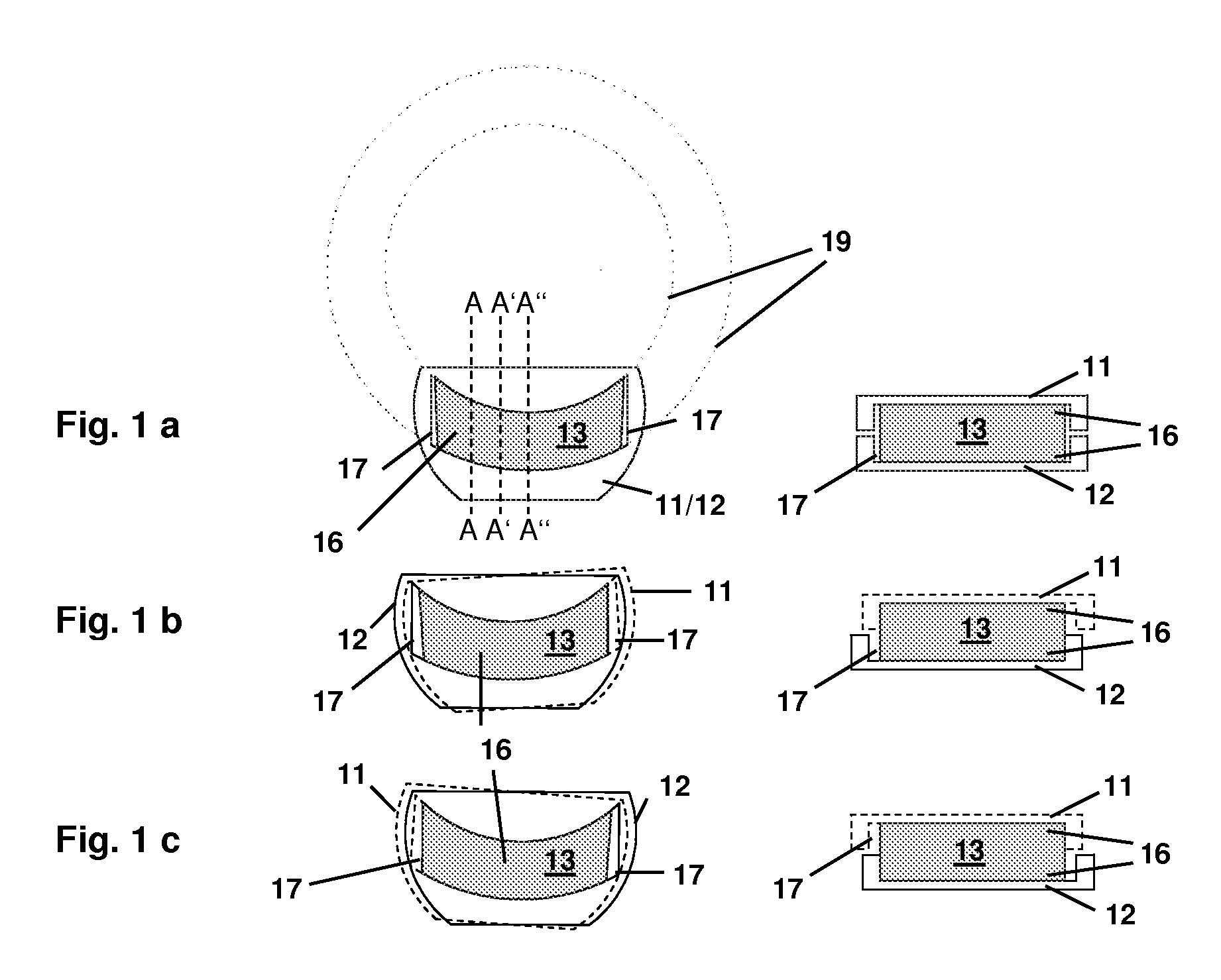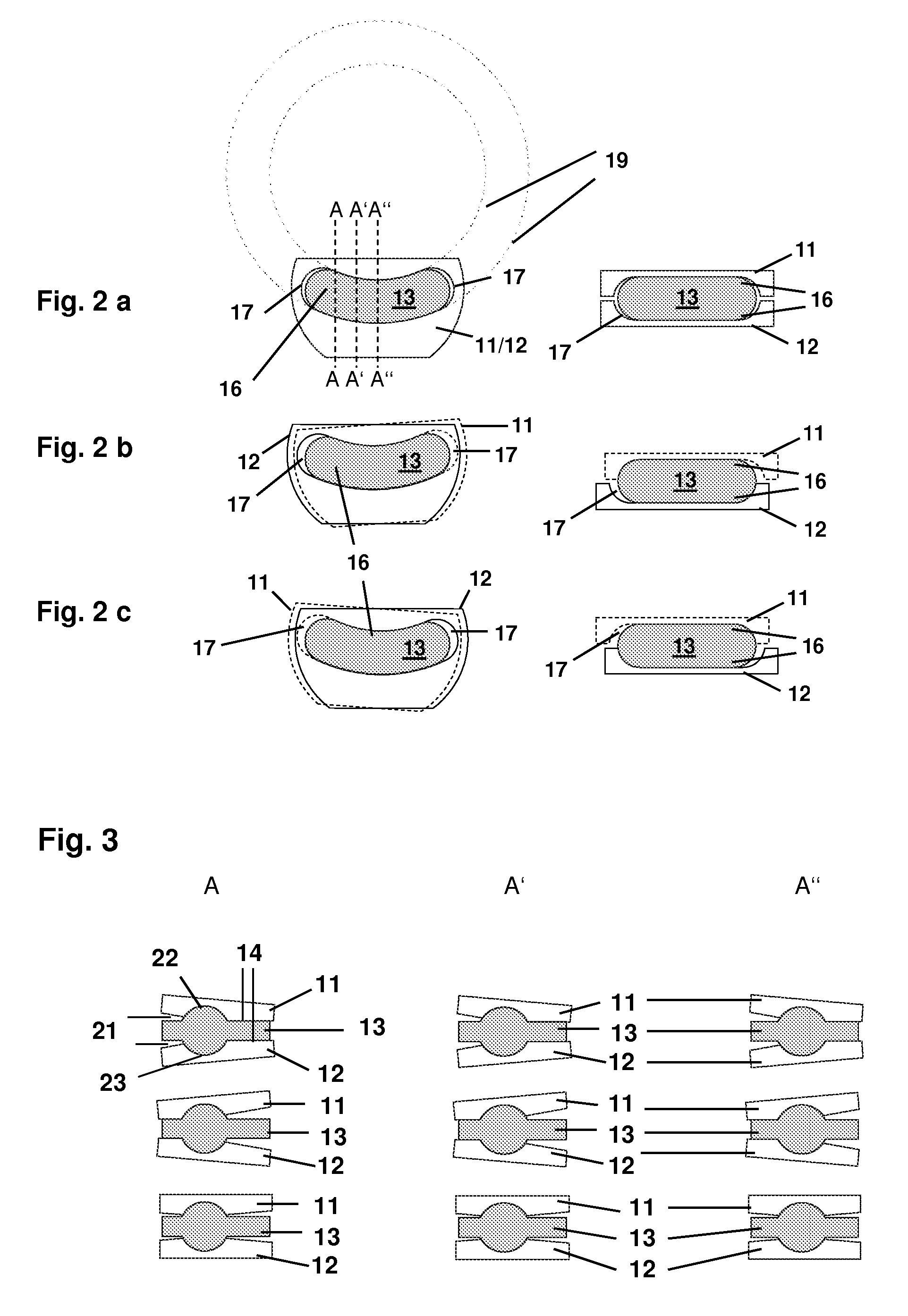Intervertebral disc prosthesis with transversally arched, curved cylindrical articulation surfaces for the lumbar and cervical spine
a technology of lumbar and cervical spine and prosthesis, which is applied in the field of intervertebral disc prosthesis, can solve the problems of increasing surgical effort, affecting the safety of patients, so as to improve the guidance of the upper and lower sliding partners, and minimize the risk of fracturing the vertebrae body
- Summary
- Abstract
- Description
- Claims
- Application Information
AI Technical Summary
Benefits of technology
Problems solved by technology
Method used
Image
Examples
Embodiment Construction
[0113]FIGS. 1 a-c and 2a-c each show a transversal overview onto the sliding partners 11, 12 of a three part intervertebral disc prosthesis, as per invention, for the lumbar spine on the left, with curved articulating convexity 16 and concavity 17 and of the middle sliding partner 13 without edge. A limited rotation of upper and lower sliding partner 11, 12, with respect to a fictitious vertical axis of the prosthesis, is made possible due to the curved articulation areas. Convexity 16 and concavity 17 are displaced dorsally in the depicted models.
[0114] The ventral and dorsal curvation of the convexity 16 of the middle sliding partner 13 is derived from two circles with different radii but identical mid points. The radii of curvature run in a constant distance towards each other. As per invention, it is however intended that the secants can laterally run towards each other or diverge. The right part of FIGS. 1 a-c and 2a-c each schematically show a frontal section of the prosthesi...
PUM
| Property | Measurement | Unit |
|---|---|---|
| aperture angle | aaaaa | aaaaa |
| aperture angle | aaaaa | aaaaa |
| height | aaaaa | aaaaa |
Abstract
Description
Claims
Application Information
 Login to View More
Login to View More - R&D
- Intellectual Property
- Life Sciences
- Materials
- Tech Scout
- Unparalleled Data Quality
- Higher Quality Content
- 60% Fewer Hallucinations
Browse by: Latest US Patents, China's latest patents, Technical Efficacy Thesaurus, Application Domain, Technology Topic, Popular Technical Reports.
© 2025 PatSnap. All rights reserved.Legal|Privacy policy|Modern Slavery Act Transparency Statement|Sitemap|About US| Contact US: help@patsnap.com



